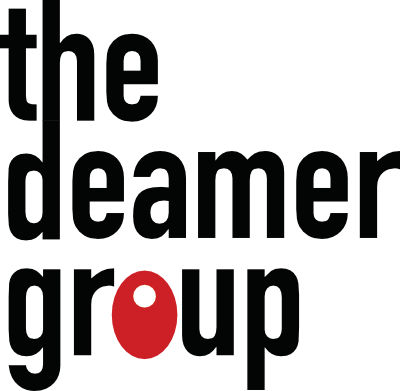With the high cost of turnover well-documented, companies large and small who are interested in a diverse, engaged workforce are turning to Diversity and Inclusion (D&I) as an investment in employee retention.
Many companies are both hiring and conducting skills gap training in previously under-tapped communities. For example, Bank of America has hired and trained 4,700 workers from low- to middle-income communities during the last 18 months and plans to hire another 10,000 during a five-year period, which sets an excellent precedent for other organizations.
What are the benefits of a diverse workforce?
Soft and hard skills galore
Considering the current labor shortage, the HR conversation has seen some shift towards talent and potential over hard skills–in particular, the idea that a candidate with requisite soft skills is extremely trainable to the needs of the position they are hired for.
Because, as the Center for Women and Business director Trish Foster says, we are shaped by “our backgrounds, culture, experiences, and personalities, […] Organizations that blend people who think differently from each other — analytical workers, conceptual thinkers, creative spirits, or detail-oriented employees — can create energy to drive new ideas and productivity.” Capabilities like creativity and analytical thinking are the lifeblood of a company’s actionable ideas.
A multigenerational, multiracial, gender-balanced workforce will naturally bring a broad range of hard and soft skills from all walks of life and educational backgrounds. Moreover, older and younger workers often make successful mentoring pairs. Older generations, like Baby Boomers and Gen X, stand out for their long-term occupational and worldly experience as well as what some call “Survival Skills,” including practical knowledge and manual work skills, for having lived through war times and worse economies. Millennials, while thought by many to be entitled, are in fact a resilient generation that survived the latest recession and is the generation most interested in civic responsibility, with high expectations for their companies to give back through CSR and volunteer programs. Gen Z is becoming well-known for their modern tech skills and entrepreneurial drive, with 41% planning to start their own business.
Under-tapped groups also provide a wealth of adaptable hard and soft skills; we’ve discussed older workers before, and another major example can be found in veterans. Today’s military, at the most diverse it’s ever been, embodies the very idea of inclusion: “In addition to working with diverse members within their branch of service, many veterans have worked with civilian and military personnel from around the globe.” Among veterans’ core skills, for example, are the ability to work under pressure, teamwork, leadership, and discipline–all highly adaptable.
Co-worker relationships and engagement
The Randstad U.S. Workmonitor Q2 2018 report found that employees strongly believe in the benefits of a multi-generational workplace. 87% of workers said that a multi-generational environment fosters innovation and problem-solving, with a full 90% saying they “prefer having colleagues of various ages and think a multi-generational workplace benefits everyone.”
Meanwhile, the Myers-Briggs Company (yep, the one that’s famous for the personality test!) has come out with a new report that relationships with co-workers are a leading contributor to employees’ well-being. The three-year, 10,000-person study with data from over 131 countries found that positive relationships with co-workers are a top predictor of employees’ happiness in the workplace.
While this may not come as a shock, it certainly hasn’t historically been a top employer focus. In fact, many employers would as likely break up water cooler talks about the latest Game of Thrones episode (though that’s over for now) as allow it, although short, relationship-building breaks actually build camaraderie, help employees of all backgrounds feel included, and ultimately increase workplace engagement and productivity.
Generally, workplace well-being is correlated with higher job satisfaction, employee commitment, interest in job tasks, and most importantly, retention. HR Dive recommends gauging employee satisfaction among the diverse employees in your organization and using the information to “cultivate a culture of well-being to attract, engage and retain talent.”
The power of employee recruiting and retention
According to Peakon, worker engagement and loyalty drops 9 months before they quit, a major predictor of eventual turnover. Among the 14 factors they identified that contribute to employee engagement are freedom of opinions and peer relationships.
Shockingly, a recent global study of engagement by the ADP Research Institute spanning 19 countries found that only 16% of employees worldwide consider themselves to be fully engaged–which means that a whopping 84% are not currently working at full potential. In the U.S. specifically, employee engagement sits at 17%.
Employees are more likely to thrive in environments where they feel included by their management and colleagues. This is where having a diverse C-suite improves company inclusion and well-being from the top down: The ADP report found that employees who trusted their team leader were 12 times more likely to be fully engaged. 51% of workers say that they feel belonging in the workplace when they can freely share their opinions, and 50%, when they feel comfortable being fully themselves, to which end being part of a diverse and inclusive team, makes a big difference. In fact, ADP found that teamwork was the biggest driver of engagement, and employees who identified as part of a team were 2.3 times more likely to be fully engaged.
Keep in mind that worker engagement is self-perpetuating. Engaged employees who believe strongly in their company’s values and mission are the best brand advocates and ambassadors for recruiting a similarly diverse, engaged body of potential candidates. LinkedIn claims that employees are actually every company’s secret recruiting weapon: On average, a company’s employees have ten times more connections than the company has followers. Building a robust employee ambassador program pays dividends: When employees re-share company content, they achieve an average click-through rate of 2.1 times the original company status update. Their network is three times more likely to trust them than trust the CEO.
When employees are socially engaged in spreading company content both on social media and by word of mouth, the results are palpable. Because happy employees are highly likely to recommend their company to others, the company’s reputation as both a good employer and a diverse, inclusive workplace grows. These companies are then 58% more likely to attract top talent and 20% more likely to retain them.
The bottom line: D&I doesn’t exist in a vacuum
Diversity and inclusion form a crucial part of a company’s culture, employee engagement and sense of belonging, and recruitment and retention efforts. This is precisely why employers are taking action to promote D&I in the workplace–82% say it helps them to attract and retain talent, and 62% say it drives employee engagement.
However, even as D&I becomes a top focus of the C-suite, there is no one-size-fits-all approach: “[Employers today] recognize that inclusion and diversity cannot exist in a vacuum. It needs to be built for each organization’s unique and diverse workforce and woven into the fabric of their culture, benefits, pay, and workplace policies.” As businesses become increasingly aware of “the clear link between diverse talent and improved business results,” It’s likely that employers will only strengthen their commitment in the coming years–and you should too!

